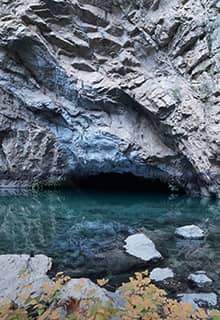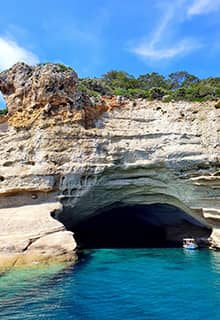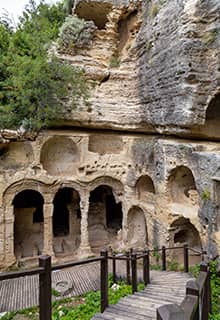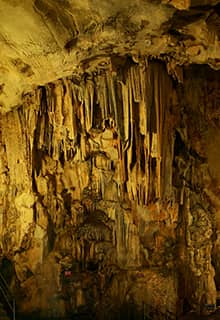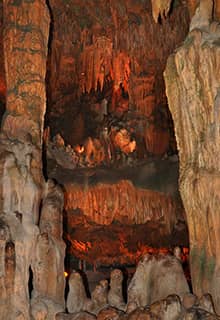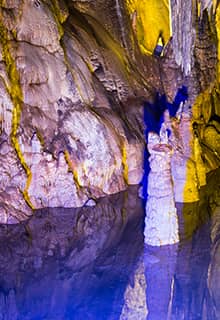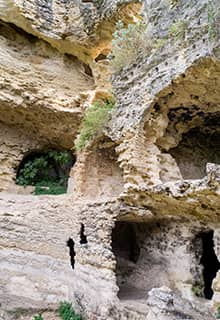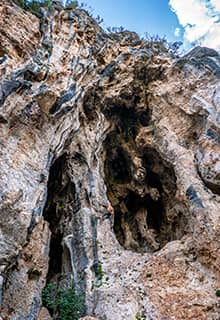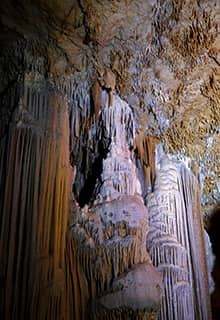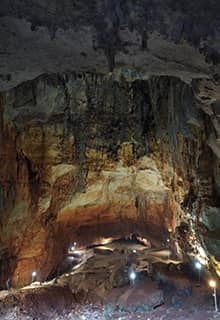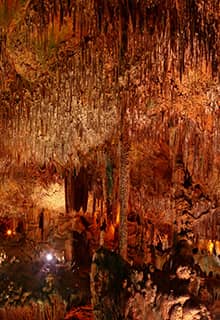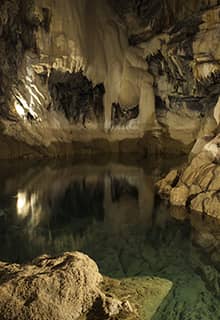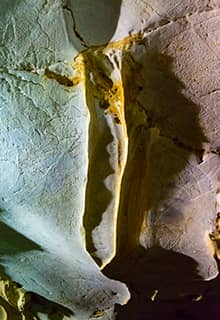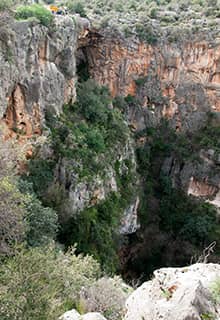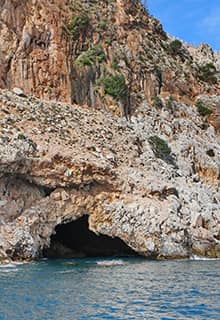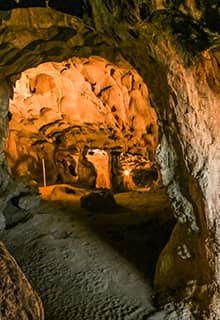

caves Mediterranean
Türkiye
Damlataş Cave, Antalya
Damlataş Cave is one of Türkiye’s show caves and is close to Alanya on the Mediterranean coast. The cave was discovered by accident in 1948. Workers were laying dynamite for the construction of the Alanya Pier and chanced upon this beautiful stalactite cave. The cave is 30 meters in length and covers a total area of 200 sq m.
Damlataş Cave is on the west coast of the historical Alanya Castle. The name of the cave comes from the stalactites which were formed by water droplets.
Apart from its beauty, this cave is popular because its atmosphere is believed to be beneficial to people who have respiratory complaints and asthma. The people who come to the cave for its curative qualities visit the cave for a period of 21 days; the cave has special morning visiting hours reserved for health tourism.
The atmospheric conditions in the cave remain constant throughout the year. The temperature is 22 degrees Celsius, humidity is 95%, and atmospheric pressure is constant at 760 mm Hg. The air in the cave contains a relatively high percentage of carbon dioxide (CO2), around 10 to 12 times more than in normal air, 71% nitrogen, 20.5% oxygen, and some radioactive ion.
Gilindire (Aynalıgöl) Cave, Mersin
Located in the district of Aydıncık in Mersin, Gilindire Cave is also known as Aynalıgöl Cave (lit. Mirror Lake Cave). A shepherd accidentally discovered the cave in 1999, and scientists now regard it a unique geological formation.
Its entrance is on a cliff 46 m above sea level. The cave has a total length of 555 m and a clearance of 22 m. It is a horizontally developed, polygenic-fossilized cave.
The cave features a wealth of stalagmites, stalactites, as well as "pillar, wall and drapery dripstones, leakage stones and cave needles" which divide the interior into many chambers. There is a lake in the rear of the cave that is surrounded by dripstones and pillars. The lake is 140 m long, 18-30 m wide, and 5-47 m deep.
Some parts of the cave's main gallery are inhabited by bats. Outside the cave, the nearby bays are the habitat of the Mediterranean monk seal.
In 2013, Gilindire Cave was designated a nature reserve by the Ministry of Forest and Water Management. It was opened to the public and has become a tourist attraction.
İnsuyu Cave, Burdur
İnsuyu Cave, in the southern city of Burdur, hosts millions of stalactites and stalagmites, and nine pools which you can discover in small boats. Water flows in small streams from the nine pools to other regions of the cave. The cave has a constant circulation of cool and clean air.
The cave is 597 m long and is situated 900 m above sea level. As a result of the melting and abrasion of the karstic structure over time, the stalactites, and the stalagmites, scientists have estimated that the cave was formed thousands of years ago.
The cave’s water is believed to have curative qualities and in specific to heal stomach diseases and diabetes.
Karain Cave, Antalya
Located 30 kilometers northwest of Antalya, Karain Cave is the largest cave with evidence of human habitation in Türkiye. Based on archaeological excavations, it was found that the region was used as a settlement center about 500,000 years ago. The cave provides fascinating insight into the lives and structures of ancient settlements along the Western Mediterranean. With the remains of plants and animals, and as the site of the oldest known human remains in Anatolia, the cave is one of the most important Paleolithic centers for Anatolian and Near Eastern history.
Portable artifacts found in the cave are the first known examples of Anatolian art.
Cennet and Cehennem Caves, Mersin
Cennet and Cehennem Caves (lit. Heaven and Hell Caves) are 1.4 km northwest of Narlıkuyu on Türkiye’s Mediterranean coast. They present points of interest not only as natural phenomena but also as historical sites.
As you approach the caves along the access road from the Mediterranean coastal highway, you’ll see the walls of a huge Temple of Zeus erected here in homage to the king of the Olympian gods who features prominently in the ancient myths related to the caves.
In Greek mythology, the caves were the home of the giant Typhon, who was killed by Zeus, with the help of Pan and Hermes. Typhon was father to Cerberus, a multiheaded dog (“hound of Hades”) who guarded the gates of the Underworld to prevent the dead from leaving. In fact, this entrance to the Underworld was believed to be here.
At the bottom of Cennet sinkhole, at the southern wall, a cave entrance leads to Korykian Cave, which is mentioned in the same rather complicated legend.
Altınbeşik Cave, Antalya
Altinbeşik Cave is located near the village of Ürünlü, seven km from the village of Ibradi in the district of Akseki in Antalya.
Altinbeşik Cave features Türkiye’s largest and the world's third-largest subterranean lake. It is 2,200 meters long. The lake is 125 m from the entrance and reaches a depth of 15 meters in some places. In the lake’s center there is a bridge formed by rocks.
The cave developed on three levels; the bottom and middle levels are active in the rainy seasons, and the upper level is always dry.
The cave acts as an underground stream which releases water that has collected underground. In the autumn, there are many stationary ponds, and in the spring, many streams flow from the lower two levels of the cave. In the upper level, there are stalactites and stalagmites.
Boat rides are available in the cave, allowing visitors to marvel at this natural wonder. The air inside is humid and the temperature is permanently 16 degrees Celsius.
Dim Cave, Antalya
Located 145 km east of Antalya and 11 km east of Alanya district, Dim Cave is situated 232 meters above sea level. It is on the western slope of Cebel-i Reis Mountain (1,691 m).
In the past, some parts of the cave were used as shelter by hunters and shepherds. The cave was first explored and studied by professional speleologists in 1986. In 1998, the cave was opened to visitors.
Dim Cave is 360 meters long and has approximately 10-15 meters width and height. The interior of the cave is covered by dripstone formations (stalactites and stalagmites), which continue to form to this day. It has been described as an “underground fairyland.”
At the end of the cave there is a crystal-clear pool that is 17 meters deeper than the entrance level and has a surface area of approximately 200m.
Other Caves in the Mediterranean Region
- Dilek Cave, Mersin
- Ashab-ı Kehf Cave (Seven Sleepers’ Cave), Mersin
- Fosforlu Cave, Antalya
- Köşekbükü Cave, Mersin
- Yalan Dünya Cave, Antalya
- Zeytintaşı Cave, Antalya
- Zindan Cave, Isparta
- Yerköprü Cave, Antalya (Requires equipment)
- Pınargözü Cave, Isparta (Open only to professionals)

